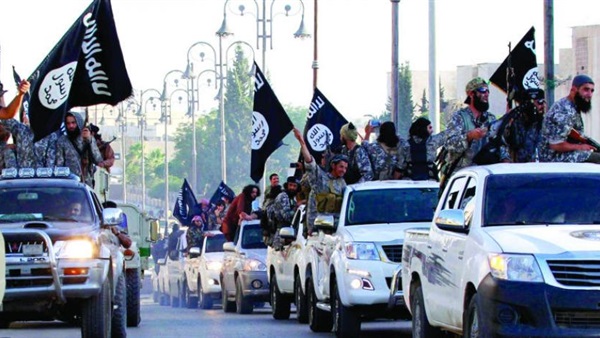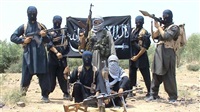Drivers and Paths of Terrorism in Central Asia

Terrorism is one the rising, nagging problems in Central Asia, which consists of the former Soviet republics of Kazakhstan, Uzbekistan, Tajikistan, Kyrgyzstan, and Turkmenistan, due to the presence of al-Qaeda organization in Afghanistan along borders stretching around 1,000 miles. The Islamist resistance dates back to Tsarist Russia (1721-1917).
After
World War II, resistance movements grew following the Bolshevik Revolution in
1917. ISIS represents the second phase of radical Islamism in the region.
Roots
of radicalism in Central Asia
The
Islamist opposition in the region turned into radical groups following the
Soviet invasion of Afghanistan in 1979. It joined forces with al-Q aeda organization, which called for
jihad and recruited many fighters from Central Asia.
The
withdrawal of the Soviet Union from Afghanistan in 1989, and its collapse later
on, has inspired the Islamist movements in Central Asia to clone the Afghani
model in their homeland.
The
concept of jihad
Terrorism
in Central Asia is highly linked to Islamist movements, which have different
and even contradictory concepts of jihad. Some movements consider jihad as a
mere military action.
Islamists
believe that Muslims should have recourse to the era of Prophet Mohamed (PBUH).
They believe that the deterioration has been a result of disdaining from
Sharia, or Islamic law.
Top
takfiri groups
The
'Adolat' movement is one of the oldest groups. It was founded in Uzbekistan.
The movement carried out a number of terrorist attacks against the government,
which is secular. The movement considered the government infidel for not
observing Sharia.
It
relocated to Tajikistan in the wake of Uzbek government crackdown, and took
part in the Tajik war (1992-1997).
A
number of groups seceded from Adolat such as Islamic Movement of Uzbekistan
(IMU), which attempted to topple the Uzbek regime in 1999.
Jund
al-Khilafah (JaK) Army of the Caliphate) and ETIM also seceded from IMU.
Drivers
of Islamist groups
The
radical Islamist groups grew in Central Asia due to a number of reasons as
follows:
-
Central Asia is
located near Kabul, home of al-Qaeda. A number of citizens from Central Asia
took part in terrorist attacks launched by al-Qaeda against the Soviet Union. Veteran
fighters returned to their homelands with agendas contradictory to the Russian
interests.
-
Ideological
vacuum which followed the end of communism. The people of the region were more
and more interested in their Islamic heritage. The deteriorated social and
economic conditions have nourished an extremist religious sentiment.
-
Social and
economic pressures, i.e. poverty ethnic tensions and weak regime have ushered
in violence.
-
The political
vision that calls for the return to early Islam eras was the only way to
overcome the economic crises. It called for the Islamization of the society.
ISIS
in Central Asia
After
the Islamic State emerged in Syria and Iraq and the terrorist groups in
Afghanistan and Pakistan pledged allegiance to Abu Bark al-Baghdadi, leader of
ISIS, it recruited fighters from all over the world, including Central Asia. It
recruited many fighters from Central Asia.
There
have been no jihadist groups in Central Asia, unlike Abu Omar al-Shishani in
Caucasia, a number of Central Asian takfiris took part in terrorist attacks in
Turkey and Russia. An Uzbek took part in an attack on a nightclub in Turkey on
New Year's Eve in 2016.
A
Kyrgyz takfiri carried out a suicide bombing in Saint Petersburg, Russia, in
April 2017. The Russia security authorities have also foiled a number of
attacks carried out by terrorists from Central Asia.
The
return of ISIS fighters to Central Asia raises much concern in the wake of ISIS
defeat in Syria and Iraq. ISIS intensified such worries after it launched the Islamic
State of Iraq and the Levant – Khorasan Province in 2015.
Conclusion
The
political and economic crises in Central Asia have gnawed at the legitimacy of
the ruling regimes and strengthened the terrorist groups, which took advantage
of the social weakness to attack governments. As a result of Russia's strict
measures in the face of immigrants from Central Asia, terrorist attacks
targeted Russia in retaliation.
Central
Asia is a good environment for the return of ISIS, especially at the borders,
which provide terrorist with a haven from the economic crises and lawlessness.
Disgruntled citizens in Central Asia grudge all the political regimes, which
are aligned with the superpowers and do not improve the basic services for
their people.









